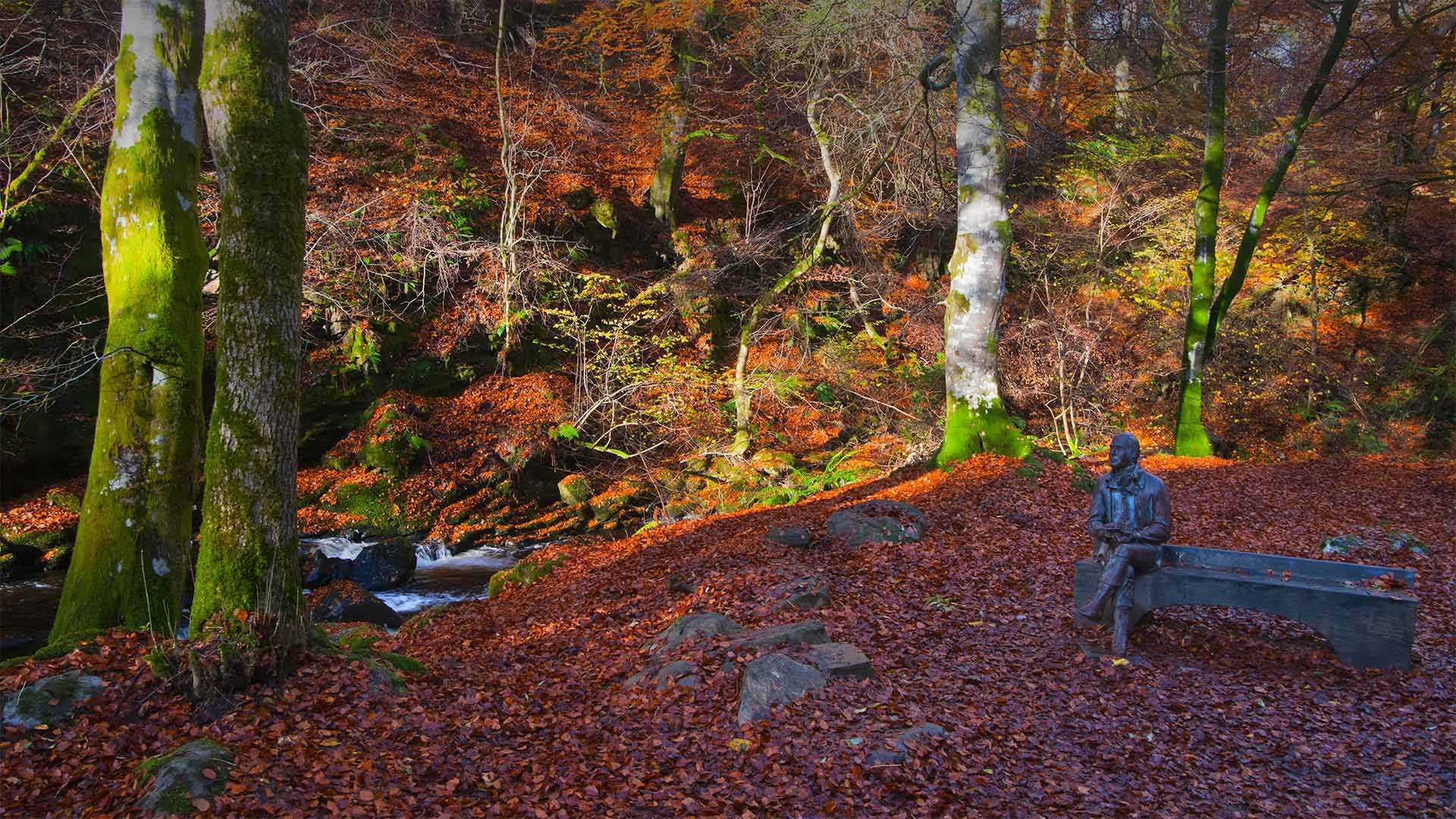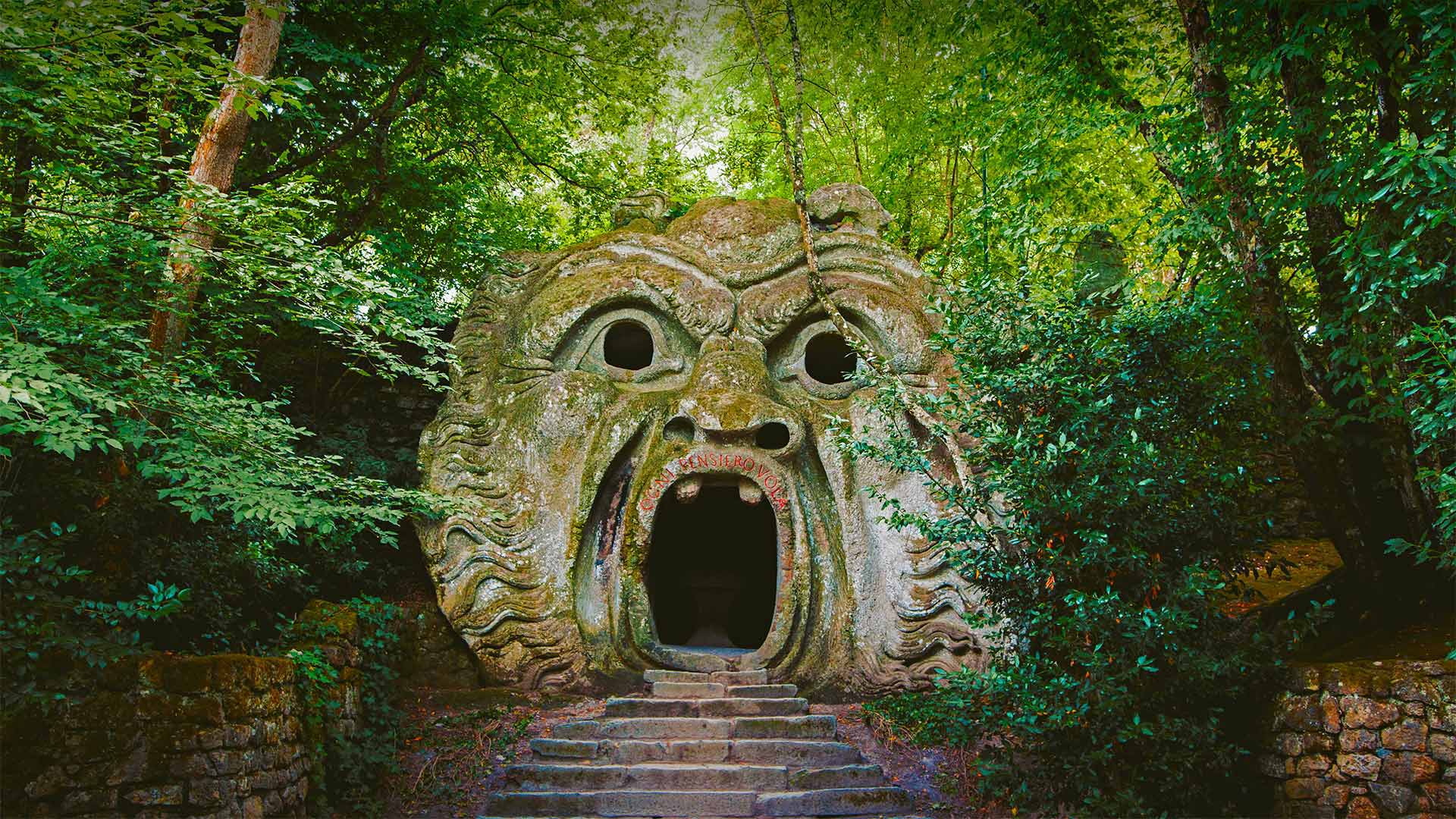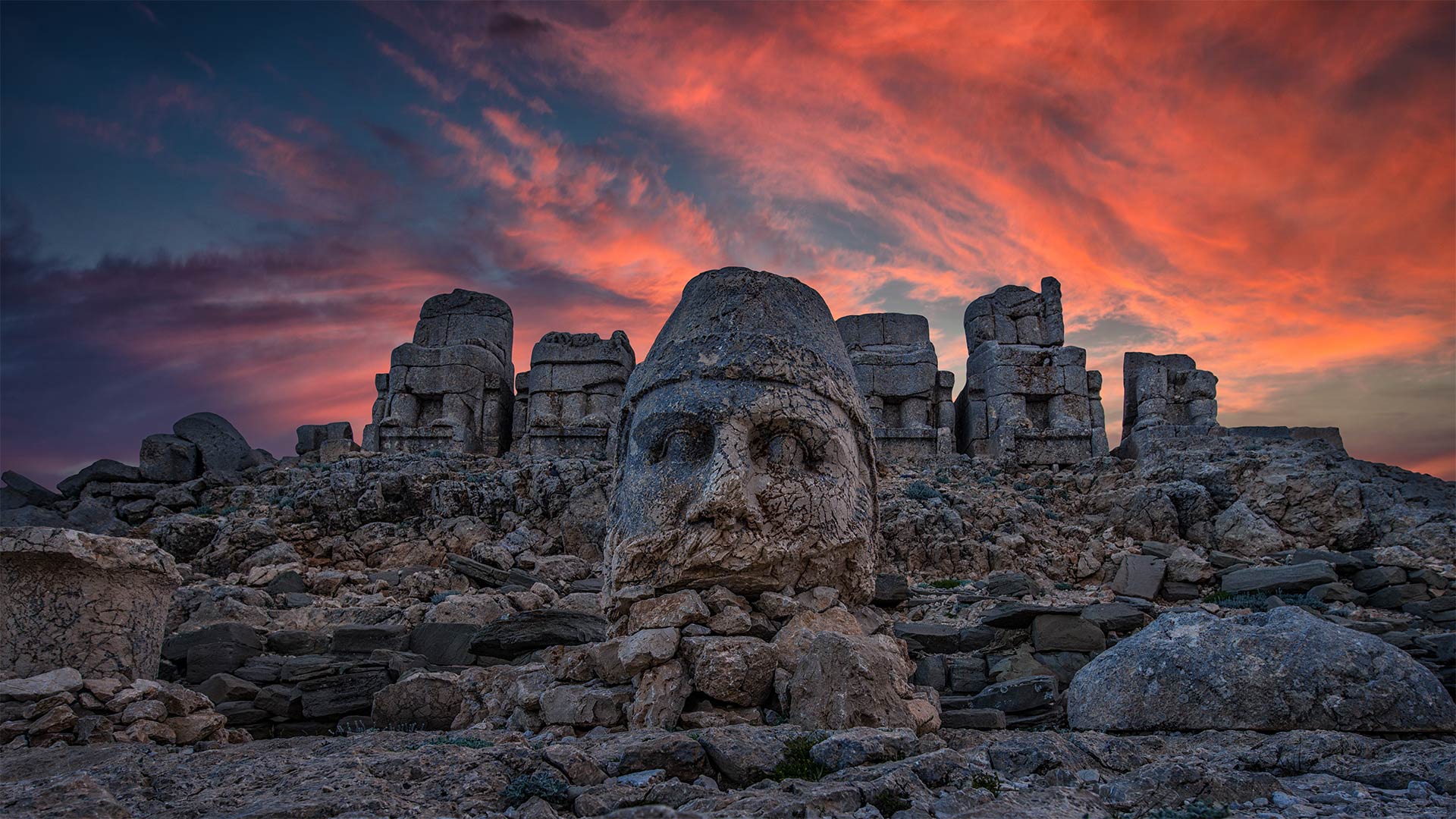位于阿伯费尔迪桦树林中的罗伯特·彭斯雕像, 苏格兰 Statue of Robert Burns in the Birks of Aberfeldy, Perth and Kinross, Scotland (© Dennis Barnes/Getty Images)

位于阿伯费尔迪桦树林中的罗伯特·彭斯雕像, 苏格兰 Statue of Robert Burns in the Birks of Aberfeldy, Perth and Kinross, Scotland (© Dennis Barnes/Getty Images)
谁写下了友谊天长地久? Celebrating the Scottish Bard
纪念这位苏格兰诗人
今天是罗伯特·彭斯的生日,让我们向他说一声“生日快乐”!罗伯特·彭斯是著名苏格兰诗人,被视为浪漫主义运动的先驱。今天照片中展示的是位于珀斯-金罗斯的阿伯费尔迪桦树林中的罗伯特·彭斯雕像。为了纪念这位诗人,今天还有一个庆祝活动——彭斯之夜。人们会在活动上享用丰盛的晚餐,品尝着羊肚脍的同时朗诵彭斯的诗歌《羊肚脍颂》。晚会通常会以大家合唱《友谊地久天长》而结束,这首诗歌由彭斯于1788年创作。
Burns Night
Today we're wishing a very happy birthday to the man regarded as Scotland's national poet and a pioneer of the Romantic movement, Robert Burns. Perhaps you can celebrate by visiting his statue at the Birks of Aberfeldy in Perth and Kinross, as seen in today's photo. The birch trees here ('birks' in the Scots language) and a local waterfall inspired him to write a song lyric, 'The Birks of Aberfeldy,' in 1787.
You might also take part in Burns Night, a worldwide celebration that involves a lavish, multicourse dinner, a recital of Burns' 'Address to a Haggis,' and a serving of that poem's titular dish. After much discussion and several poetry readings, the night traditionally ends with guests singing the New Year's standard, 'Auld Lang Syne,' with words written by Burns himself in 1788.
怪物公园里的奥库斯雕像, 意大利博马尔佐花园 Orcus sculpture in the Gardens of Bomarzo in Bomarzo, Italy (© Scott Wilson/Alamy)

怪物公园里的奥库斯雕像, 意大利博马尔佐花园 Orcus sculpture in the Gardens of Bomarzo in Bomarzo, Italy (© Scott Wilson/Alamy)
怪物公园 Park of the Monsters
《怪物公园》,意大利博马佐
加入我们的万圣节前夕之旅,前往罗马西北约60英里的意大利小镇。我们要带你去博马佐,那里有一座曾经被遗忘的16世纪花园,里面摆放着巨大的雕塑,这些雕塑的目的是唤起人们的愉悦。在我们的照片中,奥卡斯的嘴,一个罗马冥界之神,一个诅咒破坏者的惩罚者,给游客一种被深渊吞噬的感觉。在参观Parco dei Mostri(怪兽公园)期间,你会看到其他怪诞的景象,比如一条龙被狮子袭击,一个巨人撕碎一个人,以及汉尼拔的大象抓走一名罗马士兵。这些怪诞的人物在创作近500年后,仍然会让人产生一种发自内心的恐惧,也许这正是他们的本意。16世纪,博马佐的维奇诺·奥西尼公爵(Duke Vicino Orsini)委托他们来应对妻子去世的悲痛。
'Park of the Monsters,' Bomarzo, Italy
Join us for a pre-Halloween trip to a small Italian town about 60 miles northwest of Rome. We're taking you to Bomarzo, where a once-forgotten 16th-century garden holds monstrous sculptures that are meant to evoke anything but pleasure. In our photo, the mouth of Orcus, a Roman god of the underworld and punisher of broken oaths, gives visitors the feeling of being swallowed into the abyss. During a visit to the Parco dei Mostri (Park of the Monsters), as it's known, you'll come across other grotesque sights such as a dragon being attacked by lions, a giant shredding a man, and Hannibal's elephant snatching a Roman soldier. Nearly 500 years after their creation, the grotesque figures still conjure up a visceral horror, perhaps as they were always meant to do. They were commissioned by Bomarzo's Duke Vicino Orsini in the 16th century to cope with the grief of his wife's death.
内姆鲁特山上巨大的石灰岩雕像,土耳其阿德亚曼 Colossal limestone statues on Mount Nemrut, Adıyaman, Turkey (© Peerakit JIrachetthakun/Getty Images)

内姆鲁特山上巨大的石灰岩雕像,土耳其阿德亚曼 Colossal limestone statues on Mount Nemrut, Adıyaman, Turkey (© Peerakit JIrachetthakun/Getty Images)
The mountaintop of toppled gods
The ruins on Mount Nemrut depict a gaggle of gods from both Greek and Persian traditions, plus a few deities that King Antiochus I made up himself. The range of spiritual faiths represented in the statues found near the 7,000-foot summit reflects southeastern Turkey's long history as a crossroads of cultures. Today, the derelict statues are protected as a UNESCO World Heritage Site.
In 70 BCE, Antiochus took power here in Commagene, one of several small onetime states formed from the shambles of the Seleucid Empire. Looking to unify his populace, he synthesized a mythology that hailed Greek and Persian figures, from Ares to Zarathustra—plus the king himself and his family. Antiochus' claim to godhood wasn't eternal, as he was deposed in 31 BCE, but sometime before that he cemented his customized state religion in history by having its partial pantheon—including, of course, himself—carved into stone statues on the peak overlooking his kingdom.
被推翻的神的山顶
涅姆鲁特山上的废墟描绘了希腊和波斯传统的众神,加上安提约克一世国王自己创造的一些神。在7000英尺高的山顶附近发现的雕像所代表的各种精神信仰反映了土耳其东南部作为文化交汇点的悠久历史。今天,这些被遗弃的雕像被联合国教科文组织列为世界遗产。
公元前70年,安提约克在科马根尼掌权,科马根尼是塞琉西帝国废墟中形成的几个小国家之一。为了统一他的人民,他合成了一个神话,颂扬希腊和波斯的人物,从阿瑞斯到查拉图斯特拉,再加上国王本人和他的家人。安提约克对神性的要求并不是永恒的,因为他在公元前31年被废黜,但在此之前的某个时候,他通过拥有部分万神殿(当然包括他自己)在俯瞰王国的山顶上雕刻成石像,巩固了他定制的国教在历史上的地位。